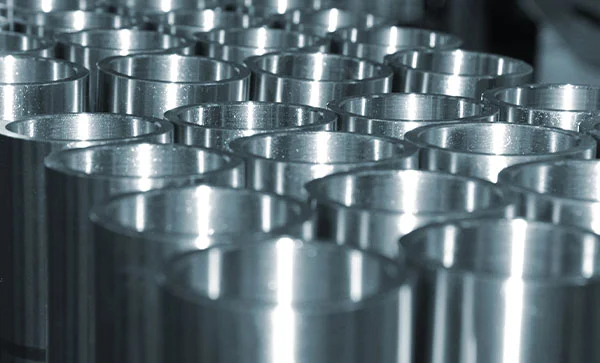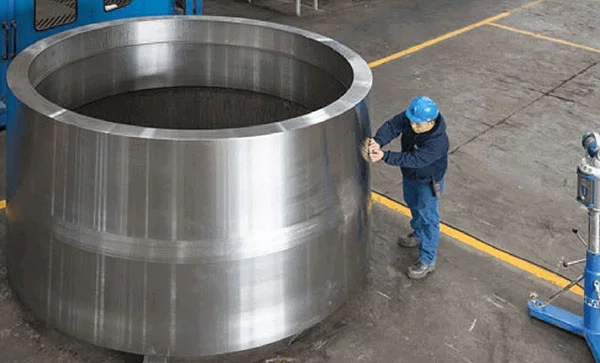Shandong Qilu lndustrial Co.,Ltd.
Exploring the Benefits of Upset Forging in Modern Manufacturing
Introduction

In the dynamic landscape of modern manufacturing, upset forging has emerged as a pivotal technique, revered for its multifaceted advantages. Beyond its mere utility in shaping metals, upset forging serves as a catalyst for elevating material properties to unprecedented levels of excellence. By subjecting workpieces to controlled compressive forces, typically at ambient temperatures, upset forging orchestrates a symphony of metallurgical transformations, enriching the grain structure and imbuing the final product with superior mechanical attributes.
The allure of upset forging lies not only in its ability to metamorphose raw materials but also in its capacity to revolutionize production paradigms. Unlike conventional manufacturing methodologies that often necessitate material subtraction, upset forging operates on the principle of material conservation, minimizing waste and maximizing resource utilization. This intrinsic efficiency not only augments sustainability efforts but also bolsters the economic viability of manufacturing endeavors.
Understanding Upset Forging
Upset forging, also known as heading or press forging, involves the application of compressive forces to deform a workpiece, typically at room temperature. This process alters the material’s shape without removing any material, resulting in improved grain structure and mechanical properties. Unlike other forging methods, upset forging focuses on increasing the cross-sectional area of the workpiece, making it ideal for producing parts with thicker sections.
Key Advantages of Upset Forging
- Enhanced Material Properties: Upset forging refines the grain structure of materials, leading to improved mechanical properties such as strength, toughness, and fatigue resistance.
- Material Savings: Since upset forging involves minimal material removal, it maximizes material utilization, reducing waste and cost in manufacturing processes.
- Complex Geometries: This forging method allows for the creation of intricate shapes and complex geometries with high precision, meeting the demands of diverse industrial applications.
- Increased Production Efficiency: Upset forging enables high-speed production of parts with consistent quality, contributing to overall efficiency and throughput in manufacturing operations.
- Cost-Effectiveness: With its ability to produce high-strength components in a single step, upset forging offers cost savings compared to multi-step machining or fabrication processes.
Additional Applications of Upset Forging
Apart from automotive manufacturing, upset forging finds extensive use in industries such as aerospace, construction, and defense. Its ability to produce high-strength components with superior mechanical properties makes it indispensable for critical applications where reliability and performance are paramount.
Case Study: Upset Forging in Automotive Manufacturing

To illustrate the practical application of upset forging, let’s consider its role in automotive manufacturing. Table 1 below presents a comparison between traditional machining and upset forging for producing automotive components such as connecting rods.
| Parameter | Machining | Upset Forging |
|---|---|---|
| Material Waste | High | Low |
| Production Speed | Moderate | High |
| Mechanical Properties | Variable | Consistent |
| Tooling Costs | Moderate | Low |
As depicted in Table 1, upset forging outperforms machining in terms of material waste, production speed, and tooling costs, while ensuring consistent mechanical properties essential for automotive components.
Conclusion
In conclusion, upset forging emerges as a highly advantageous technique in modern manufacturing processes. Its ability to enhance material properties, minimize waste, and streamline production makes it indispensable across various industries. As manufacturing continues to evolve, upset forging remains at the forefront, driving innovation and efficiency in the production of high-quality components.
FAQ
Q: Is upset forging suitable for all materials?
A: While upset forging is commonly used for materials like steel, aluminum, and titanium, its suitability depends on factors such as material ductility and the desired final shape.
Q: How does upset forging compare to other forging methods?
A: Unlike traditional forging methods that focus on shaping the entire workpiece, upset forging primarily increases the cross-sectional area of the material, making it ideal for parts with thicker sections or specific geometries.
Q: Can upset forging be automated?
A: Yes, upset forging can be automated using hydraulic or mechanical presses, enabling high-speed production with minimal manual intervention.
Q: What industries benefit most from upset forging?
A: Industries such as automotive, aerospace, and manufacturing of heavy machinery extensively benefit from upset forging due to its ability to produce high-strength components with improved material properties.
With its versatility, efficiency, and cost-effectiveness, upset forging continues to shape the landscape of modern manufacturing, offering a path towards sustainable growth and innovation.
